What is Noh?
“Noh” is said to be one of the oldest performance arts in the world. It originates back to around the end of the Kamakura to the early Muromachi period. Loved by the samurai, the ruling class of the time, Noh established itself in a position separate from other popular forms of public entertainment such as Kabuki. Today it tends to be regarded as a difficult form of theatre due to the solemn movements and precarious way lines are spoken. These qualities are also what give the art a wonderful sense of both stillness and motion that eliminates all waste from their movement while still providing a striking impression, it is an art that commands empathy and appreciation for the stage.
What is a Noh mask?
A “Noh mask” is a mask an actor wears for a type of traditional Japanese play, “Noh”. Not all the people who appear on the Noh stage wear a Noh mask. Normally only the main character, referred to as the Shite, and the attendant, referred to as the Tsure, wear masks while performing. In general, “Noh” was performed only by adult men so when the role of Shite was a woman or elderly person the men used Noh masks in order to portray the character. They also used masks when playing superhuman or supernatural beings such as gods, spirits, vengeful spirits, ogres and even a temple boy called Kasshiki who is a monk-in-training that also serves the temple as a servant. Note: Usually when playing ordinary men they don’t wear a Noh mask, a role that is called Hitamen. Of all places and in all ages of the world, many cultures have established their own mask-related plays. The Noh masks of Noh theatre, however, developed into something unique that became a sophisticated and polished art and craft that we can proudly display to the whole world today.
GALLERY
Noh masks can be broadly classified into 8 categories: Okina masks, Kishin masks, Jo masks,
Onna masks, Otoko masks, Shinrei masks, Onryou masks, and Kyougen masks.
Below you can read about them including an example mask for each category.
Okina mask
翁面
Okina (meaning “old man”) masks are the earliest of all Noh masks. It’s worn only for “Okina”, a Noh play that is also a Shinto ritual. The chin is separated and attached by string which is a feature particular to the Okina mask. It is a mask that predates the establishment of Noh itself, a shape that isn’t found in other masks. “Okina” is a play with no story or lines, instead consisting only of a series of ritual chants. Because of this, Okina masks are regarded as sacred and treated very carefully as if objects of worship themselves.
Hakushikijoh
白色尉
A type of Okina mask that displays an expression of utter happiness and prosperity. It possesses the separated chin all Okina masks do but also stylized curved wrinkles and circular eyebrows called boubou mayu (shaggy eyebrows) that are specific to this mask. The beard is grafted on in a single bunch and color but the mustache is drawn on with a brush alternating between black and white.
Kishin mask
鬼神面
Kishin (meaning “demon god”) masks were created relatively early on following the Okina-type masks. Generally, these masks have large pieces of golden metal, called gold crowns, that cover the whites of the eyes and teeth. It projects a sense of extreme anger and strength that embodies divine power. There are two types of Kishin masks, agyou and ungyou. Agyou masks have a wide-open mouth like two of the Buddhist Four Heavenly Kings, and ungyou and are made with the lips drawn closed. The characters that make up the word “Kishin” prominently include the character for “Oni” (Japanese ogre demon) who have horns but Kishin masks explicitly do not.
Hanakobuakujoh
鼻瘤悪尉
Hanakobuakujoh means a ferocious, scary, older person with a lumpy nose. It’s one of the largest Noh masks. Most Kishin masks have teeth on both upper and lower parts of the mouth, but this mask has teeth only on the upper side with huge gold crowns. It has a veined chin. The face vaguely resembles western people’s features.
Joh mask
尉面
Joh (old person) masks depict an elderly man with tied up hair. The thin shape and prominent cheekbones express age even though it possesses remarkably healthy teeth. Joh masks can be classified into two types depending on if it has only upper teeth or both upper and lower teeth, and if the eyebrows and mustache are drawn on by brush or attached directly to the mask. Each type of this mask has a different character.
Koushijoh
小牛尉
Named after Koushi Kiyomitsu, it’s also called Kojoh. Of all the Joh masks, this one is the neatest and most sophisticated with a very gentle expression.
Onna mask
女面
Onna (meaning “woman”) masks are perhaps the most prolific Noh masks. They are able to produce different expressions depending on their orientation which allows them to produce long complex performances. Onna masks are intentionally made with a sort of neutral face that makes it function as an “intermediate expression mask”. Some Okina and Otoko masks are made like this too but it’s a central feature to Onna masks. Various masks are needed to express different ages and styles, so many masks have been made.
Koomote
小面
Even though the name translates to ‘small mask,’ Koomote doesn’t mean a small face. In the same way the French word ‘petite’ means both small and pretty, Koomote means a sweet, young, elegant woman. Onna masks are the centerpiece of Noh theatre and Koomote is the original and basic model for Onna masks.
Otoko mask
男面
Otoko (meaning “boy”) masks are mainly used to portray young men, nobility and generals. Jidoh, Douji, Juuroku, Genji and Semimaru are all types of Otoko masks and hardly differ in shape from Onna masks. These masks mostly have even surfaces with few irregularities.
Chuujoh
中将
This mask is said to reflect the appearance of Ariwara no Narihira, a prince of the Heian period, its face is sophisticated and gentle. It’s a face of nobility which doesn’t project rigidity or ruggedness. It’s also used for plays where the main character is a young general.
Shinrei mask
神霊面
The Shinrei (meaning “godly spirit”) mask possesses a noble and godly appearance that goes beyond the limits of human perception. It has a lot in common with the previously mentioned Kishin masks. Both express a strange impression from the application of gold crowns to the eyes along with gold paint (gold dust mixed with liquid blue).
Ikkakusennin
一角仙人
A mask with a forked antler protruding from the forehead which is based on the legend of Ikkakusennin in which a sage was born from the womb of a deer. He lived in India and had power so strong that he was able to seal a dragon god within a cave, as strong as his power was he still could not resist the beauty of a woman.
Onryou mask
怨霊面
Onryou (meaning “vengeful spirit”) masks are used to portray characters who died a regrettable death in battle or a woman who died mad with jealousy and returns from the nether world to haunt the person who is the target of her ill will. It expresses its supernatural existence by fixing the eyes with gold crowns and gold paint (gold dust mixed with glue) the same way Kishin and Shinrei masks do.
Hannya
般若
A transcendent masterpiece produced by Noh theatre. It simultaneously possesses both an awful angry expression as well as opposing facial expressions of grief and sadness. The facial movement should be completely opposite for both expressions, yet both facial movements are present on the same mask.
Kyougen mask
狂言面
Kyougen (comedic interludes between acts of Noh) performances utilize masks as well when playing a being not of this world, an extremely elderly person, an ugly woman, or a nun to emphasis their unique features. They can be classified into Okina-types, spirit, human, ghost, brute, as well as personified animals and plants. However, on this website we bundle them all together as Kyougen masks.
Usobuki
空吹



